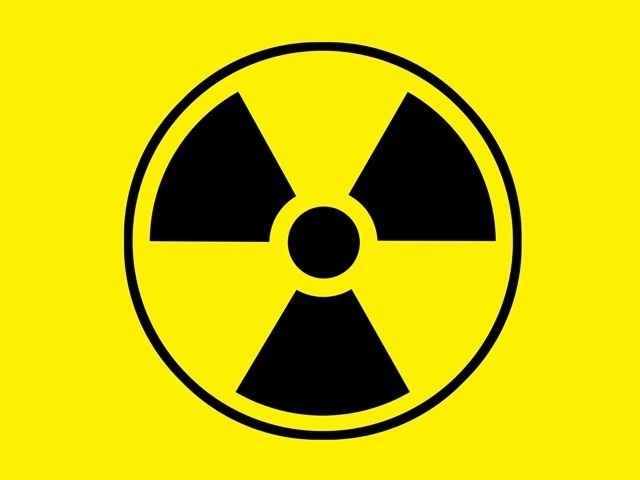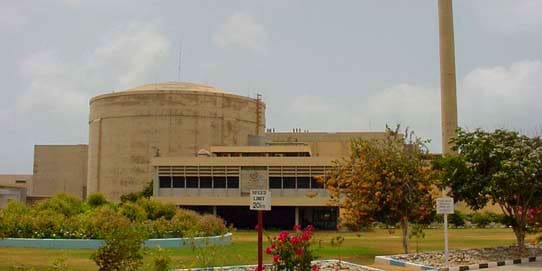
In recent months, concern has been growing in Pakistan and India regarding the safety of nuclear plants in those countries. In mid-October 2011, there was nuclear leakage at the Karachi Nuclear Power Plant (KANUPP) in Pakistan, which led to concern over the ageing nuclear facility. The leakage was reported in the Pakistani media, and the Pakistan Atomic Energy Commission (PAEC) sought to assure the public that the incident was minor.
However, some Pakistani environmentalists raised concern over the safety of KANUPP. A Pakistani newspaper also accused the PAEC of downplaying the security concerns regarding the leak.
The concern over KANUPP comes amid continuing fear in Pakistan that some terrorist groups could get hold of Pakistan's nuclear weapons.
Amid the concern over Pakistan's nuclear weapons, a national debate is emerging in India, where there have in recent months been protests against a Russian-built nuclear plant in the southern Indian village of Kudankulam. Civil society groups are opposing the commissioning of the plant, over safety concerns. Their protests are continuing, despite assurance by former Indian president Dr. A. P. J. Abdul Kalam that the Kudankulam plant has built-in safety measures.
The following are excerpts from reports and editorials on recent nuclear issues in Pakistan and India.
Pakistan Media Report: Leak at KANUPP Leads to Emergency

Karachi nuclear power plant (KANUUP)
"The leakage at the Karachi Nuclear Power Plant, commonly known as KANUPP, started around midnight on Tuesday [October 18, 2011] during a routine maintenance shutdown, said Tariq Rashid, a plant spokesman.
"The 137-megawatt power plant, which started commercial operations in 1972, is located about 24 km (15 miles) to the west of Karachi, Pakistan’s biggest city and commercial capital, on the Arabian Sea coast.
"[Plant spokesman Tariq Rashid said:] 'The plant was already shut down since Oct. 5 and the leakage started during maintenance checks...' He said the emergency was imposed at the plant immediately after the leak and the affected area was isolated. The emergency was lifted seven hours later, after the leak was brought under control."
According to the report, Tariq Rashid estimated that the KANUPP plant would be operational again within four to five weeks. He added, "The situation is completely under control and no damage or radiation has been reported, though it will slightly delay the reopening of the plant..."[1]
Newspaper Report: Pakistan Atomic Energy Commission "Predictably Played Down the Leak"
An editorial in The Express Tribune daily stated that Pakistan Atomic Energy Commission (PAEC) "predictably played down the leak" at the KANUPP plan.[2] The editorial was published after the PAEC issued a statement to allay nuclear safety concerns a few days after the leak occurred.
A Pakistani media report stated:[3] "The Pakistan Atomic Energy Commission... clarified ... that the oldest nuclear power plant in the country, KANUPP, and its surroundings were absolutely secure and safe. The commission said that the safety of the plant was being monitored by an independent safety committee.
"A PAEC spokesperson said that the incident of heavy water leakage was minor in nature, referring to a news story that appeared in the press, adding that it should be classified as an incident, not an accident.
"A formal investigation into the incident was already under way and the plant will restart operations after necessary in-service inspections are made, the spokesperson said...."
Pakistani Environmentalists "Raised Questions Over Safety Measures and Operational Protocols" at KANUPP
A Pakistani website reported on the growing concern over nuclear safety in Pakistan following the nuclear leak at KANUPP,[4] stating: "Environmentalists and civil society activists have raised questions over safety measures and operational protocols after a recent leakage of heavy water at the Karachi Nuclear Power Plant [KANUPP]...."
"A senior environmentalist, who had worked with the IUCN – the World Conservation Union – and at various other international environment-related organizations, said on condition of anonymity that the incident should be taken as a wake-up call; a thorough assessment of the plant should be made and old and obsolete components should be replaced.
"Since the plant had outlived its designed life many years ago and was upgraded to expand its operations for a few more years, he said, its boilers should be replaced and heat exchange system thoroughly examined and passed through a rigorous tolerance test. He suggested that radiation levels should be monitored regularly in and around the plant, besides the nearby marine environment where the plant’s cooling water is discharged.
"He said that another worrying thing, particularly after the tsunami-hit nuclear disaster in Japan, was that the nuclear plant was not only situated near the biggest city [i.e. Karachi] of the country but three seismic lines were also passing through the vicinity and these matters should not be taken lightly...."
"Senior environmentalist F.H. Mughal said that after the incident a stricter vigil needed to be maintained because the plant was old. He said the leakage from a pipe suggested that it was an old pipe and probably was not maintained properly. He said strict safety measures should be taken because the plant was near Karachi...."
"B. M. Kutty, an official at the Pakistan Peace Coalition – a civil society organization – asked the government to get rid of the nuclear facility which was 'non-productive' and posing threat to millions of people living in Karachi and to the fragile marine environment.
"He deplored that the authorities were not providing any details of the accident. He said that information about safety measures adopted to protect the people from any potential risk was not being provided to the masses.
"Mr. Kutty said that earlier also civil society organizations had asked the PAEC to provide a copy of the Karachi Emergency Relief Plan in case of a nuclear disaster, but it had not been done. He said a similar accident had occurred at the same facility some 20 years ago but the government had not yet provided its details to public."
General Musharraf: America Can't Attack Pakistan's Nuclear Weapons
In recent years, there has been growing concern over the safety of Pakistani nuclear weapons. After the May 2, 2011 Abbottabad operation in which Al-Qaeda leader Osama bin Laden was killed by U.S. commandos, Pakistani politicians have also feared that the U.S. can carry out a similar operation against the Pakistani nuclear plants.
In early November 2011, former Pakistani military ruler General Pervez Musharraf said, while visiting the U.S., that the U.S. could never reach Pakistan's nuclear weapons. A report on an Indian website stated:[5] "Musharraf has claimed that the country's nuclear weapons are very hard targets and can never be attacked by the United States. [He said:] 'I don't think it is possible from my purely military perspective for anyone, including the United States, to attack them that easily...'
"[He continued:] 'They are very well dispersed and they are in very strong positions and also guarded. So I don't think it's as simple as the Osama bin Laden action or one point action, which is a soft target. These are very hard targets. And (they are kept) in places which are not accessible...'
"Musharraf said that Pakistan's nuclear weapons are demated. 'As far as this mating and demating is concerned, they are all demated. I think even when we had a confrontation with India, we never mated the weapons, and I don't think India did. Because we have conventional strength to meet the challenges of war, so we don't have to go unconventional right away. So therefore they are never mated,' he said."
Protests Against India's Russian-Backed Nuclear Plant

Nuclear plant at Kudankulam
In the coastal village of Kudankulam in the southern Indian state of Tamil Nadu, two nuclear reactors – each with a capacity of 1,000 megawatt – are under construction, with Russian assistance. In recent months, the nuclear plant, which is scheduled to be commissioned by the year's end, has been mired in controversy following protests by local people over nuclear safety fears. The protests are led by civil society organizations such as the People's Movement Against Nuclear Energy and People's Watch.
An Indian media report stated:[6] "Villagers at Kudankulam... [are] demanding closure of the upcoming nuclear power plant. And this time, it's an indefinite relay hunger strike...
"'We've planned to launch an indefinite relay hunger strike. This time, people from the adjoining coastal districts of Tuticorin and Kanyakumari too would join. If the plant work resumes, thousands of villagers will lay siege outside the plant, come what may,' said S. P. Udhayakumar, coordinator, People's Movement against Nuclear Energy.
"A third of the plant's 6000-strong contract workers have already left the town out of fear... [he added]."
Amid the continuing protests, Sergey Karmalito, an official at the Russian Embassy in New Delhi sought to assure that an effective safety mechanism is in place at the plant. He stated: "We hope that authorities can take steps to pacify the situation... What is happening in Kudankulam is unfortunate. We have implemented all our commitments. All safety norms are in place. Now it is up to India to ensure commissioning of the plant."[7]
Former Indian President Dr. A. P. J. Abdul Kalam, a scientist and architect of the country's missile program, visited the plant in early November. Stating that he was not representing the federal Indian government, Dr. Kalam gave a thumbs-up for the nuclear plant, stating that there was no need for any panic over its safety features.
Kalam told journalists: "I am completely satisfied and happy with the sophisticated safety features of the reactors and hence there is no need for panic since it's only a boon to the future generation.... I'm a scientist, I'm a technologist. I support nuclear energy along with solar and wind power as it is a clean and green energy which is very much required for the country's rapid growth now... "[8]
Protest Leader P. Nedumaran: "A Blast in the Kudankulam Plant... Would Affect the Nearby District of Madurai, As Well As Thiruvananthapuram...."
Dr. Kalam's visit was opposed by the local organizations. An Indian media report stated:[9] "Tamil Nationalist Movement leader P. Nedumaran.... condemned the Central [Indian] Government's efforts to use former President of India, A.P.J. Abdul Kalam, as mediator to talk to the protestors in Kudankulam to make them withdraw the protest...."
"Addressing a protest meeting against the Kudankulam Nuclear Power Plant Project..., Mr. Nedumaran said, 'Mr. Abdul Kalam is a nice man and we have great respect for him. But he has a greater responsibility when it comes to Kudankulam Nuclear Power Project and should not let himself become a tool in this gamble where thousands of people live in fear.'
"He further said that the continuous protests by the people... had led to awareness among a large number of people which had led to protests across the [Tamil Nadu] state. He also said that according to experts, if there was a blast in the Kudankulam plant it would affect the nearby district of Madurai as well as Thiruvananthapuram....
"Henri Tiphagne, executive director, People's Watch, said that the government was trying to suppress the democratic forms of protest against the nuclear power project."
[1] www.dawn.com (Pakistan), October 20, 2011. The text of the reports has been lightly edited for clarity.
[2] The Express Tribune (Pakistan), October 25, 2011.
[3] The Express Tribune (Pakistan), October 22, 2011.
[4] www.dawn.com (Pakistan), October 21, 2011.
[5] www.rediff.com (India), November 7, 2011.
[6] www.ndtv.com (India), October 18, 2011.
[7] www.moneycontrol.com (India), November 7, 2011.
[8] www.thehindu.com (India), November 6, 2011.
[9] www.thehindu.com (India), November 6, 2011.








